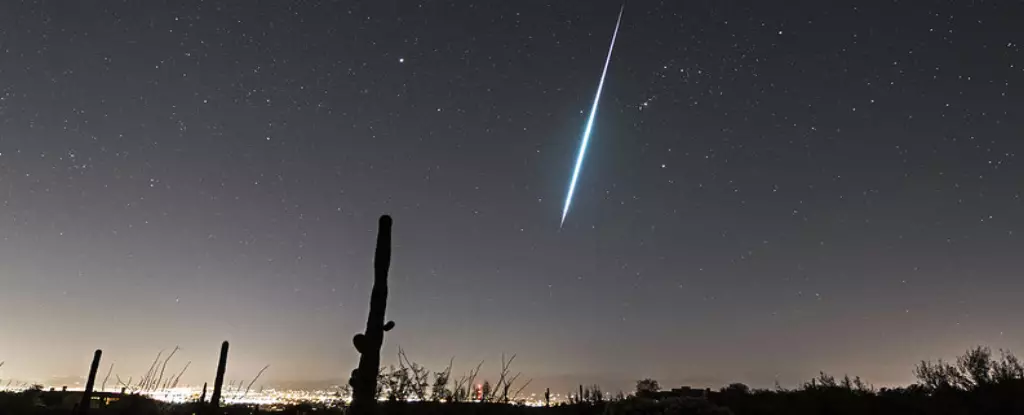As we approach the end of 2024, sky-watchers around the world are preparing for one of the most anticipated meteor showers of the year: the Geminids. Scheduled to peak from the night of December 13th to the dawn of December 14th, this cosmic event promises a dazzling display of shooting stars. However, not all conditions are ideal this year. The cold winter nights may deter some observers, and the presence of a nearly full moon could obscure many faint meteors. Nevertheless, the Geminids are known for their abundance; under the right circumstances, viewers could witness up to 120 meteors per hour, creating an unforgettable spectacle.
For optimal viewing of this meteor shower, understanding the timing and positioning is crucial. The shower reaches its zenith at 3:00 Universal Time (UT) on December 14th, which translates to 10:00 PM Eastern Standard Time (EST) on December 13th. Observers in western Europe and North America will have prime visibility, making this an exciting opportunity for both amateur and experienced astronomers. The radiant point of the Geminids lies in the constellation Gemini, specifically near the bright star Castor, which allows for meteor visibility even before midnight. Thick clouds or urban light pollution can significantly hamper your experience, so finding a dark area with clear horizons should be the foremost priority.
At the heart of the Geminid phenomenon is the intriguing ‘rock-comet’ 3200 Phaethon, an object that challenges traditional classifications between asteroids and comets. With an orbital period of approximately 1.4 years, Phaethon has caught the attention of astronomers, prompting Japan to plan a close-up mission via DESTINY+ for launch in 2028. This research could deepen our understanding of what triggers such intense meteor showers, especially considering the Geminids have outshone other notable showers like the Perseids in recent decades.
Proper preparation can significantly enhance your meteor shower experience. It is vital to choose a location that offers minimal interference from the moon’s light, which will be positioned close to the constellation Taurus during the peak night. Simple strategies such as placing a hill or tree between your viewing point and the moon can help. Furthermore, because the Geminids are active for several days before and after their peak, your opportunities to spot meteors extend beyond just the main event. Observing during the predawn hours, when the moon is lower on the horizon, can also yield better results.
Interestingly, contributing to meteor shower science is more accessible than many might realize. With just some time spent watching and recording your observations, you could offer valuable data to the International Meteor Organization (IMO). Documenting your findings enhances the scientific community’s grasp of meteor activity, and such programs engage amateur stargazers in meaningful research. Remember, other meteor showers like the November Taurids and the Ursids, which peak around December 22nd, are still active during this time, potentially adding to your observational experience.
For those interested in photography, capturing the Geminids can also be a rewarding pursuit. Setting up a DSLR camera on a tripod with an intervalometer allows for automated timed exposure shots, enabling you to catch those fleeting meteors. Positioning your camera 45 to 90 degrees from the radiant will yield better chances of spotting these luminous trails against the backdrop of a starry sky.
The Geminid meteor shower serves as a spectacular way to conclude the year in sky-watching. Despite challenges posed by weather and moonlight, the reward of witnessing these magnificent celestial events makes the effort worthwhile. Prepare to experience this annual treasure, as the cosmic display promises to illuminate December nights and inspire wonder for all who take the time to look up. Whether you choose to observe with the naked eye or capture photographs of shooting stars, the Geminids will undoubtedly leave a lasting impression—and maybe even spark a deeper interest in the mysteries of the universe.

